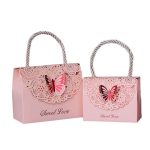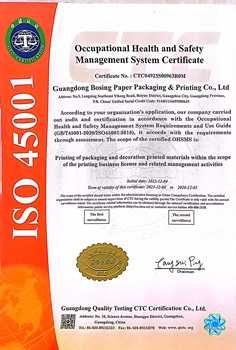In an era where convenience meets sustainability, foldable food packaging boxes have emerged as the unsung heroes of the food industry. These innovative containers are not just simple boxes—they represent a fundamental shift in how we think about food storage, transportation, and consumption. From bustling city food trucks to elegant restaurant takeaway services, foldable packaging solutions are transforming the culinary landscape one fold at a time.
The beauty of foldable food packaging lies in its elegant simplicity. These containers are designed with precision engineering that allows them to be stored flat when not in use, occupying minimal space in storage facilities and delivery vehicles. When the time comes to package that delicious meal, they spring to life with a few simple folds, creating sturdy, reliable containers ready to safeguard culinary creations. This space-saving characteristic translates directly into reduced storage costs, lower transportation expenses, and ultimately, a more efficient supply chain that benefits both businesses and consumers.
Environmental sustainability is where foldable food packaging boxes truly shine. Most modern foldable containers are manufactured from renewable, biodegradable materials like cardboard, paperboard, or plant-based plastics. Their efficient design means less material waste during production, and their collapsible nature significantly reduces the carbon footprint associated with transportation and storage. As consumers become increasingly environmentally conscious, businesses that adopt these eco-friendly packaging solutions position themselves as responsible corporate citizens while appealing to the growing market of sustainability-minded customers.
Beyond their practical and environmental benefits, foldable packaging offers remarkable versatility in design and functionality. Manufacturers can customize these containers with brand logos, nutritional information, and attractive graphics that turn ordinary takeout into a branded experience. Special compartments, dividers, and sealing mechanisms can be incorporated to accommodate various food types—from saucy Asian dishes that require leak-proof designs to delicate pastries that need protective cushioning. The ability to create specialized packaging for different culinary needs makes foldable boxes an invaluable tool for food businesses of all types.
The economic advantages of adopting foldable food packaging are substantial for businesses both large and small. The reduced storage requirements mean smaller businesses can optimize their limited space, while larger operations can achieve significant savings in warehouse management. The lightweight nature of these containers lowers shipping costs, and their efficient assembly process can streamline packaging operations, reducing labor requirements. Additionally, the enhanced brand presentation possible with customized foldable packaging can justify premium pricing and improve customer perception of food quality.
Consumer experience has been dramatically enhanced through the adoption of foldable food packaging. Modern designs feature user-friendly aspects such as easy-open mechanisms, secure closure systems, and ergonomic handles for comfortable carrying. Many foldable containers are designed for dual-purpose use—they not only transport food safely but also serve as convenient serving dishes that maintain food temperature and presentation. Some innovative designs even transform into plates or dining surfaces, providing complete dining solutions for people on the go.
As technology advances, the future of foldable food packaging looks increasingly sophisticated. Smart packaging incorporating QR codes, temperature indicators, and augmented reality experiences are already entering the market. The integration of sustainable materials continues to evolve, with developments in edible packaging, water-soluble containers, and packaging made from agricultural waste. The marriage of traditional folding techniques with cutting-edge materials science promises to deliver packaging solutions that are simultaneously more functional, more sustainable, and more cost-effective.
The global pandemic has accelerated the adoption of foldable food packaging as takeout and delivery services became essential. This crisis highlighted the importance of reliable, hygienic, and convenient packaging solutions that protect both food and consumers. Foldable boxes proved ideal for contactless delivery, maintaining food integrity during transportation while providing reassurance to health-conscious customers. This experience has permanently shifted consumer expectations and cemented the position of foldable packaging as an industry standard.
From food trucks to fine dining establishments, from corporate cafeterias to home meal kit services, foldable food packaging boxes are proving their worth across the entire food industry spectrum. Their combination of practical benefits, environmental responsibility, and economic advantages makes them not just a packaging choice but a strategic business decision. As we look toward the future of food consumption, one thing is clear: the humble foldable box will continue to play a crucial role in how we enjoy meals beyond traditional dining settings.
The revolution in food packaging is unfolding before our eyes—quite literally. Foldable food packaging boxes represent more than just containers; they embody innovation, sustainability, and convenience in perfect harmony. As technology advances and consumer preferences evolve, these versatile packaging solutions will continue to adapt and improve, ensuring that our food arrives safely, our planet benefits, and our dining experiences remain exceptional regardless of where we choose to eat.




Leave a Message